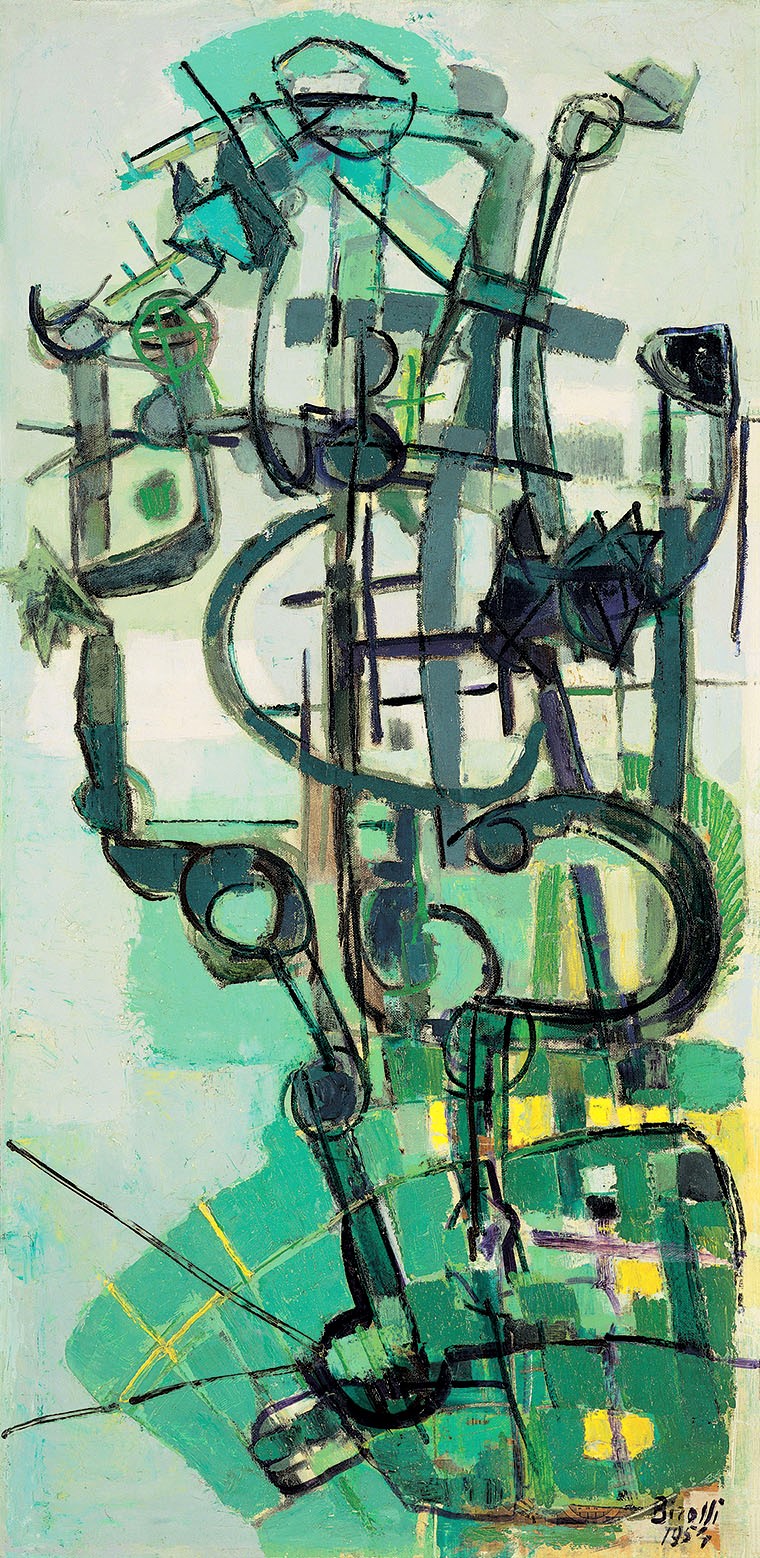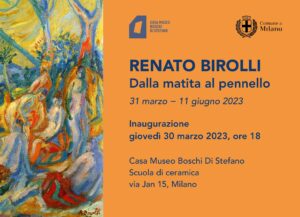The Birolli Art Foundation has been founded!
The President Viviana Birolli and the members of the Board of Directors are pleased to announce the establishment of the Renato Birolli ETS Foundation.
The Foundation’s mission is to protect, preserve, share, and enhance the exceptional legacy of the painter Renato Birolli (1905–1959), an emblematic figure and a leading protagonist of twentieth‐century Italian art. Conceived as a living archive, the Foundation takes over the legacy of the Archivio Renato Birolli, which for over sixty years has documented the artist’s oeuvre, reinvigorating his figure through an ambitious project of international scope, in close dialogue with contemporary creation.
A Unique Documentary and Artistic Heritage to Preserve and Share
Throughout his career, Renato Birolli was an undisputed protagonist not only in the artistic panorama but also in the Italian historico-critical debate of the first half of the twentieth century, thanks to an intense period of critical and poetic writing. True to the Archive’s mission, the Foundation will make available to the public, in digital format, the vast corpus of autographed writings—including numerous poetic treatises and a substantial collection of correspondence with the leading Italian critics of the early twentieth century—along with an extensive assemblage of newspaper clippings, exhibition catalogues, and brochures gathered by the artist between the 1930s and the 1960s. Through close collaborations with the academic and scientific worlds, the Foundation will promote a program aimed at enhancing this unique documentary and artistic heritage, fully aligned with its social mission of sharing and providing access to knowledge for the broadest audience.
A Legacy to Be Protected and Defended
The Archivio Renato Birolli has been cataloguing and safeguarding the artist’s work for over sixty years, supported by a family history defined by passion and transmission: initially managed by Rosa Birolli, the artist’s widow, the Archive has continued to grow seamlessly, decade after decade, thanks to the dedication of the artist’s sons, Zeno and Marco Birolli, and more recently, his granddaughter, Viviana Birolli. Within its mission of protecting and promoting the artist’s work, the Renato Birolli ETS Foundation encompasses activities of expertise, the fight against forgeries, as well as the archiving of materials in both paper and digital formats, strengthening the project of collecting iconographic and documentary material in preparation for the publication of the new comprehensive catalogue raisonné of Renato Birolli’s oeuvre.
A Project Designed to Combine Historical Heritage with Contemporary Perspectives
The Renato Birolli ETS Foundation was established at the initiative of Viviana Birolli—an art historian with a doctorate from the Université Paris Panthéon-Sorbonne, and a renowned art critic and curator of contemporary art—with the clear intention of blending historical legacy with contemporary viewpoints. Renato Birolli was an indefatigable cultural and artistic catalyst, at the forefront of several of the most significant historical-artistic movements of the first half of the twentieth century: the struggle against the rigid artistic canons of the Novecento, in pursuit of renewal and European openness; the initiative of the review and the Corrente movement, which during the Fascist regime championed a program of active poetic resistance to fascist pragmatism; the Fronte Nuovo delle Arti and the Gruppo degli Otto, which in the post-war era asserted the artist’s absolute freedom in the face of the risks of ideological contamination inherent in social realism. In keeping with this unruly yet forward-looking critical stance, the Foundation will promote a series of initiatives designed both to restore full value to the artist’s historical-artistic journey during his active years and to open up new, unexpected dialogues with contemporary creation.
An Italian Project with a Distinctly International Outlook
While Renato Birolli’s art is deeply rooted in the context of Italian historico-critical discourse, it also rightfully claims a prominent position on the international art scene of the twentieth century.
From his first New York exhibition at the Catherine Viviano Gallery (1951) until his premature death in 1959, Renato Birolli’s exhibition activity became particularly intense abroad—not only in the United States but also in England, Switzerland, and Germany. Characterized by an unmistakably abstract syntax, the works produced during this period engage with the more mature expressions of international informal techniques, to which they contribute a singular lyrical inflection and a distinctive naturalistic imprint.
Established in Italy with the collaboration of a team of esteemed Italian art experts, the Renato Birolli ETS Foundation is committed to restoring the luster and historico-critical depth of the artist’s work within a decidedly international framework, through international-level exhibitions on Italian soil as well as, and more importantly, through research and exhibition initiatives overseas and partnerships with creators and renowned international institutions.
A Prestigious Team of Experts
Chaired by Viviana Birolli, the Renato Birolli ETS Foundation benefits from the collaboration of Carlo Ettore Colombo, serving as Vice-President and Secretary General; the prominent Milanese collector Attorney Giuseppe Iannaccone; and a robust team of experts active on the Foundation’s scientific and cultural committee. This group includes, in addition to Viviana Birolli, Luca Massimo Barbero, Elena Pontiggia, Paolo Rusconi, Sileno Salvagnini, Ernesto Damiani, and Nico Stringa—each a recognized authority on early twentieth-century art, committed both to academic and scientific research as well as to the historico-critical enhancement of Italy’s cultural heritage in the twentieth century.


